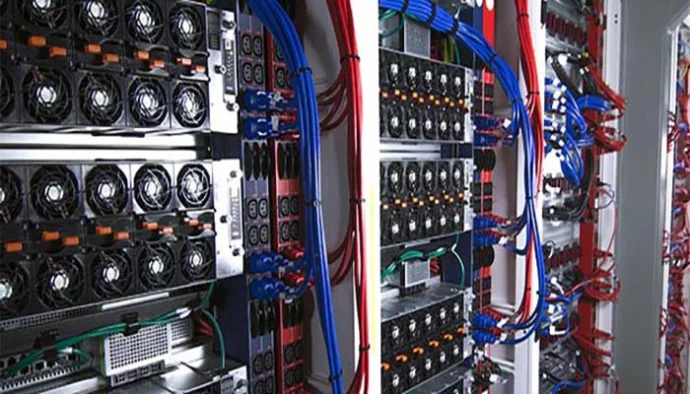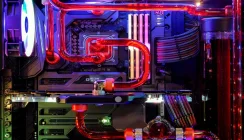A Guide To Power Distribution Units In Datacentre Server Racks
Power distribution is sometimes viewed as one of the last decisions to make at the end of the critical power path within your server room or datacentre. The fact is that this is also one of the most important and critical. The reason is that, after investing in LV switchboards, uninterruptible power supplies and standby power generators decisions must be made which govern not only the connection of your loads but also whether and how to monitor them.
PDU Selection Checklist
Power distribution units vary in outlet configuration and size and their ability to meter, monitor and report on an array of critical power related information. Then right choice of PDU will impact on the overall reliability and scalability of your server room or data centre environment. Here is our checklist for planning a PDU installation:
- How many power outlets do you need? Every single device within your server rack or racks will require a power source and most will be AC (alternating current) powered. Even DC powered devices may have their own AC/DC adaptor plugs that will need to be connected to a critical power protected source.
- What type of sockets do you need? The next step is to identify the socket types. Most devices will be powered from C13 or C19 outlets using plug-in cables. Occasionally it may be necessary (for AC/DC transformer plugs) to add BS1363 style sockets to the list. Some PDUs are available with colour coded and locking socket outlets to prevent accidental disconnection. It is also possible to secure outlets to prevent unauthorised power connections.
- Do you need single or three phase power? An obvious question but one that can disrupt power connections as there are both single and three phase power distribution units available.
- What is the total load to be powered? It is important to rate a power distribution unit for the load to be powered and include a safety margin where possible of 10-20%. The outlet type will determine the maximum power that can be drawn from the socket and the PDU will include overall protection, normally in the form of a circuit breaker to prevent damage both up and downstream from an overload surge or short-circuit.
- How will the PDU be mounted in the server rack? Smaller power distribution units can be installed horizontally within a 19inch wide frame. PDUs with large number of power outlets may too wide for this arrangement and require a vertical mounting.
- What metering and control options are required? This is an important question in terms of power metering to be built-into the PDU and whether this needs to be at the individual socket level or not.
With the answers to these questions it is then possible to select from one of three types of PDU which includes: basic, metered and smart or intelligent.
Basic PDUs – simple power outlet connection and distribution
Also known as a power strip, the basic PDU is little more than a socket extension strip for mounting in a server cabinet. The PDU will have several power outlets and may include spike/electrical noise filtering and surge protection. Some basic PDUs can be upgraded with additional modules to turn them into more advanced PDUs with metering functions.
Basic PDUs offer no remote monitoring and are ideal for small computer rooms and server rooms with a limited number of installed servers and IT equipment.
Metered PDUS – provide power usage information
The next level in sophistication is that of the metered PDU. Metered PDUs provide power related information that can be used to show consumption for analysis and in a colocation data centre, for billing. The typical power related information monitored includes load current, kVA, kW, kWh, power factor, AC supply voltage (from a UPS system or mains power supply) and its frequency.
A metered PDU usually displays this information on a built-in display panel or GUI (graphical user interface). It may also be possible to access the information via a built-in or optional plug-in remote IP/SNMP interface. The information available from a metered PDU can be collated to check for individual PDU power consumption, as well as overall load balancing for the server rack, and overall server room and datacentre.
Metered PDUs are recommended for larger server rooms and data centres and especially those with shared resources (including electricity) which require individually billing.
Intelligent PDUs : smart energy usage and outlet controls
Intelligent or smart PDUs are the most advanced type of power distribution product with additional features to a basic and metered PDU. What makes this type of product ‘Smart’ is the extra functionality built-in. The PDUs include an IP/SNMP interface as standard and this may even be a hot-swap module to allow upgrades and swap-outs without the need for load downtime. Connection to a local IP network allows the PDU to continuous report on power consumption and provide power related metrics locally or via a web interface to a data centre infrastructure management (DCIM) platform.
The advantages of continuous power monitoring even down to individual socket levels allows for instantaneous alarm reporting if safety thresholds are exceeded. Electricity consumption down to individual sockets is typically +/- 1% in accuracy allowing for timely and precision billing. Load balancing is also more precise as is the loading on upstream UPS systems allowing for redistribution of the critical power as required.
Intelligent or smart PDUs also tend to offer a wide range of additional monitoring accessories to enable them to monitor environment factors: temperature, humidity, water ingress, smoke and security.
In addition to the more advanced communications features, intelligent PDUs also tend to include switched outlets. This is an important feature as it allows individual power outlets to be remotely controlled i.e. switched off or on to assist local reboots or the powering down of individual servers. This can help to reduce the workload of data centre technicians during peak periods and with sever utilization during off-peak load periods as servers can be activated or deactivated remotely.
Summary
Power distribution is as an important decision as any other within the critical power path of a server room or data centre. Selecting the right PDU arrangement will ensure that it is easier to manage power to servers and IT equipment within a rack and scale the equipment accordingly. In addition, overall space can be optimised, and cabling made simpler for ease of swap-out, upgrade and maintenance. The information provided by a metered or intelligent PDU also helps to assist with load balancing, billing and understanding the power usage profile of a server room or data centre during peak and off-peak periods. The analysed data can help to improve energy efficiency and issues with cooling such as hot-spots and other environment monitoring concerns.


























